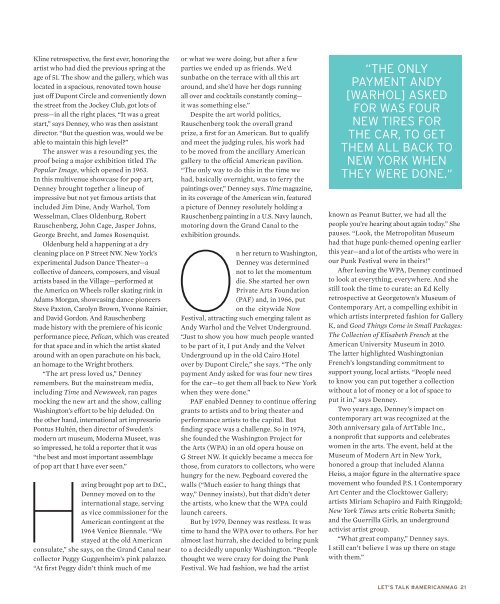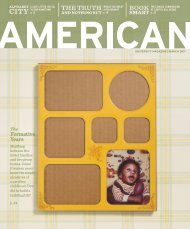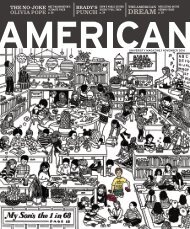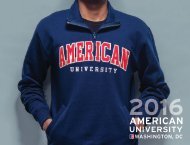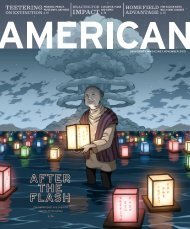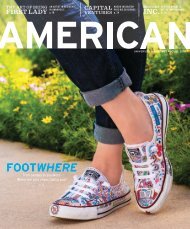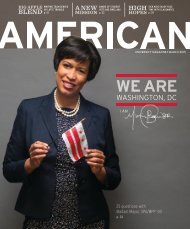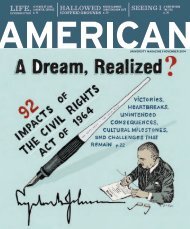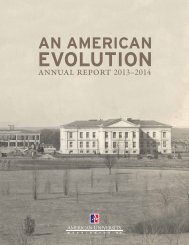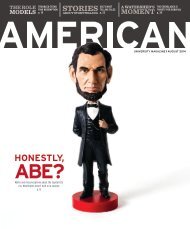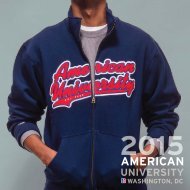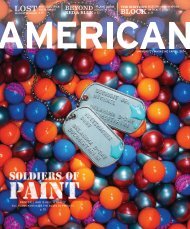Create successful ePaper yourself
Turn your PDF publications into a flip-book with our unique Google optimized e-Paper software.
Kline retrospective, the first ever, honoring the<br />
artist who had died the previous spring at the<br />
age of 51. The show and the gallery, which was<br />
located in a spacious, renovated town house<br />
just off Dupont Circle and conveniently down<br />
the street from the Jockey Club, got lots of<br />
press—in all the right places. “It was a great<br />
start,” says Denney, who was then assistant<br />
director. “But the question was, would we be<br />
able to maintain this high level?”<br />
The answer was a resounding yes, the<br />
proof being a major exhibition titled The<br />
Popular Image, which opened in 1963.<br />
In this multivenue showcase for pop art,<br />
Denney brought together a lineup of<br />
impressive but not yet famous artists that<br />
included Jim Dine, Andy Warhol, Tom<br />
Wesselman, Claes Oldenburg, Robert<br />
Rauschenberg, John Cage, Jasper Johns,<br />
George Brecht, and James Rosenquist.<br />
Oldenburg held a happening at a dry<br />
cleaning place on P Street NW. New York’s<br />
experimental Judson Dance Theater—a<br />
collective of dancers, composers, and visual<br />
artists based in the Village—performed at<br />
the America on Wheels roller skating rink in<br />
Adams Morgan, showcasing dance pioneers<br />
Steve Paxton, Carolyn Brown, Yvonne Rainier,<br />
and David Gordon. And Rauschenberg<br />
made history with the premiere of his iconic<br />
performance piece, Pelican, which was created<br />
for that space and in which the artist skated<br />
around with an open parachute on his back,<br />
an homage to the Wright brothers.<br />
“The art press loved us,” Denney<br />
remembers. But the mainstream media,<br />
including Time and Newsweek, ran pages<br />
mocking the new art and the show, calling<br />
Washington’s effort to be hip deluded. On<br />
the other hand, international art impresario<br />
Pontus Hultén, then director of Sweden’s<br />
modern art museum, Moderna Museet, was<br />
so impressed, he told a reporter that it was<br />
“the best and most important assemblage<br />
of pop art that I have ever seen.”<br />
Having brought pop art to D.C.,<br />
Denney moved on to the<br />
international stage, serving<br />
as vice commissioner for the<br />
<strong>American</strong> contingent at the<br />
1964 Venice Biennale. “We<br />
stayed at the old <strong>American</strong><br />
consulate,” she says, on the Grand Canal near<br />
collector Peggy Guggenheim’s pink palazzo.<br />
“At first Peggy didn’t think much of me<br />
or what we were doing, but after a few<br />
parties we ended up as friends. We’d<br />
sunbathe on the terrace with all this art<br />
around, and she’d have her dogs running<br />
all over and cocktails constantly coming—<br />
it was something else.”<br />
Despite the art world politics,<br />
Rauschenberg took the overall grand<br />
prize, a first for an <strong>American</strong>. But to qualify<br />
and meet the judging rules, his work had<br />
to be moved from the ancillary <strong>American</strong><br />
gallery to the official <strong>American</strong> pavilion.<br />
“The only way to do this in the time we<br />
had, basically overnight, was to ferry the<br />
paintings over,” Denney says. Time magazine,<br />
in its coverage of the <strong>American</strong> win, featured<br />
a picture of Denney resolutely holding a<br />
Rauschenberg painting in a U.S. Navy launch,<br />
motoring down the Grand Canal to the<br />
exhibition grounds.<br />
On her return to Washington,<br />
Denney was determined<br />
not to let the momentum<br />
die. She started her own<br />
Private Arts Foundation<br />
(PAF) and, in 1966, put<br />
on the citywide Now<br />
Festival, attracting such emerging talent as<br />
Andy Warhol and the Velvet Underground.<br />
“Just to show you how much people wanted<br />
to be part of it, I put Andy and the Velvet<br />
Underground up in the old Cairo Hotel<br />
over by Dupont Circle,” she says. “The only<br />
payment Andy asked for was four new tires<br />
for the car—to get them all back to New York<br />
when they were done.”<br />
PAF enabled Denney to continue offering<br />
grants to artists and to bring theater and<br />
performance artists to the capital. But<br />
finding space was a challenge. So in 1974,<br />
she founded the Washington Project for<br />
the Arts (WPA) in an old opera house on<br />
G Street NW. It quickly became a mecca for<br />
those, from curators to collectors, who were<br />
hungry for the new. Pegboard covered the<br />
walls (“Much easier to hang things that<br />
way,” Denney insists), but that didn’t deter<br />
the artists, who knew that the WPA could<br />
launch careers.<br />
But by 1979, Denney was restless. It was<br />
time to hand the WPA over to others. For her<br />
almost last hurrah, she decided to bring punk<br />
to a decidedly unpunky Washington. “People<br />
thought we were crazy for doing the Punk<br />
Festival. We had fashion, we had the artist<br />
“THE ONLY<br />
PAYMENT ANDY<br />
[WARHOL] ASKED<br />
FOR WAS FOUR<br />
NEW TIRES FOR<br />
THE CAR, TO GET<br />
THEM ALL BACK TO<br />
NEW YORK WHEN<br />
THEY WERE DONE.”<br />
known as Peanut Butter, we had all the<br />
people you’re hearing about again today.” She<br />
pauses. “Look, the Metropolitan Museum<br />
had that huge punk-themed opening earlier<br />
this year—and a lot of the artists who were in<br />
our Punk Festival were in theirs!”<br />
After leaving the WPA, Denney continued<br />
to look at everything, everywhere. And she<br />
still took the time to curate: an Ed Kelly<br />
retrospective at Georgetown’s Museum of<br />
Contemporary Art, a compelling exhibit in<br />
which artists interpreted fashion for Gallery<br />
K, and Good Things Come in Small Packages:<br />
The Collection of Elisabeth French at the<br />
<strong>American</strong> University Museum in 2010.<br />
The latter highlighted Washingtonian<br />
French’s longstanding commitment to<br />
support young, local artists. “People need<br />
to know you can put together a collection<br />
without a lot of money or a lot of space to<br />
put it in,” says Denney.<br />
Two years ago, Denney’s impact on<br />
contemporary art was recognized at the<br />
30th anniversary gala of ArtTable Inc.,<br />
a nonprofit that supports and celebrates<br />
women in the arts. The event, held at the<br />
Museum of Modern Art in New York,<br />
honored a group that included Alanna<br />
Heiss, a major figure in the alternative space<br />
movement who founded P.S. 1 Contemporary<br />
Art Center and the Clocktower Gallery;<br />
artists Miriam Schapiro and Faith Ringgold;<br />
New York Times arts critic Roberta Smith;<br />
and the Guerrilla Girls, an underground<br />
activist artist group.<br />
“What great company,” Denney says.<br />
I still can’t believe I was up there on stage<br />
with them.”<br />
LET’S TALK #AMERICANMAG 21


